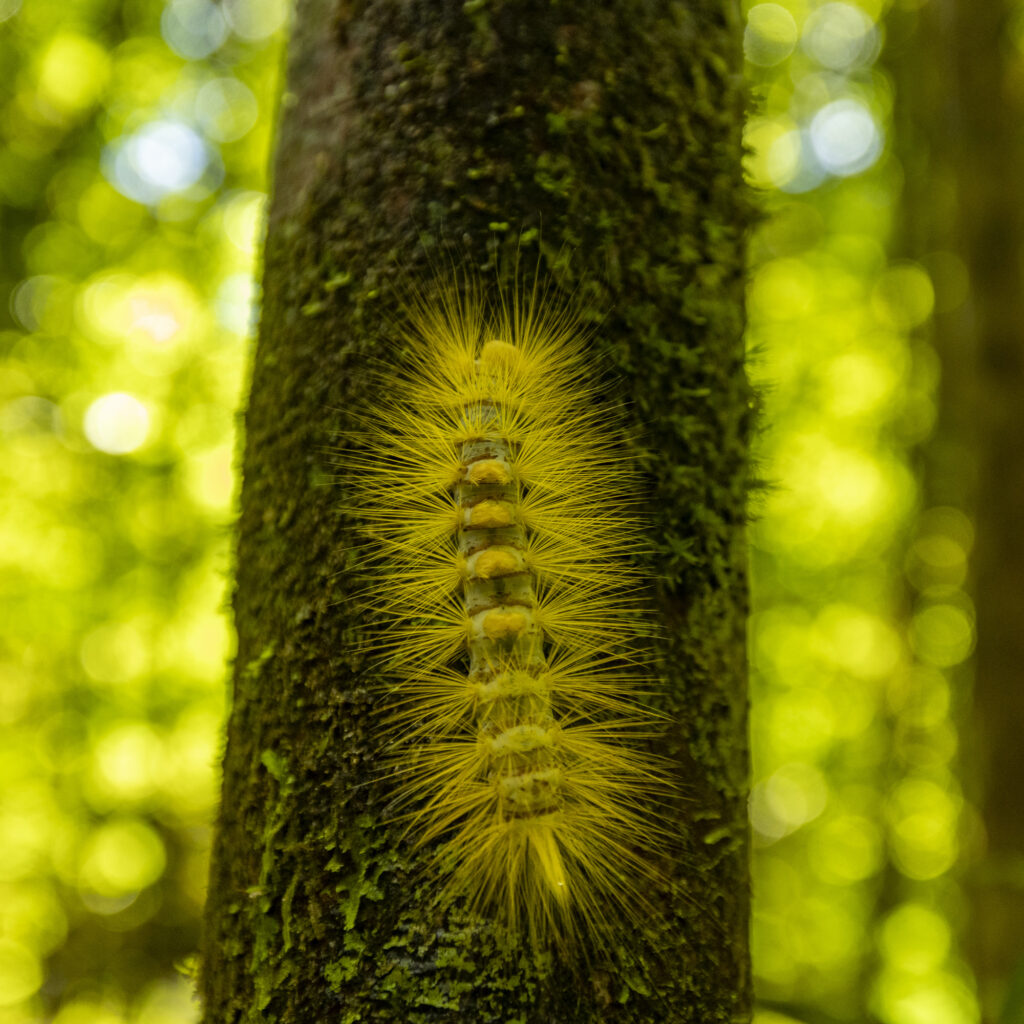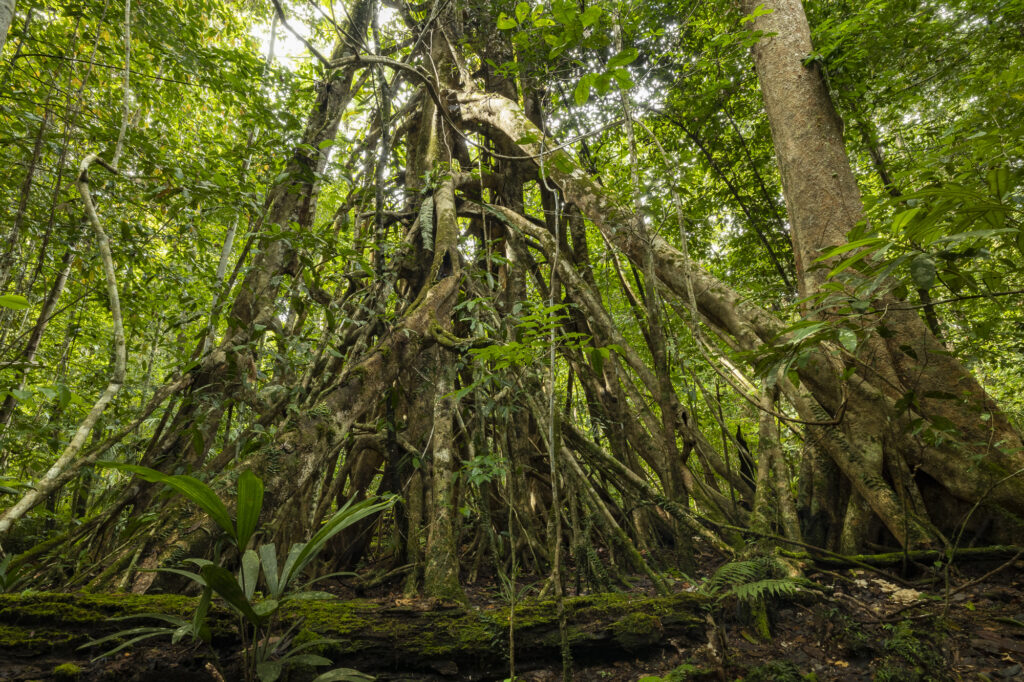Following our pursuit of the Leatherback Sea Turtles that I shared in the last Wildlife Diaries, our team moved into the interior of Western Papua, where we immersed ourselves in the riches of the lowland rainforest at a small village called Malagufuk. From our base at a small guesthouse, it was a matter of a few steps and we were in the forest. Our main targets were several species of Birds-of-Paradise, but we also hoped to film other lowland specialists, like crowned pigeons, hornbills, and even cassowaries if we were lucky.
However, the plant life could not to be ignored! The forest abounded with spectacularly large strangler figs and many beautiful species of palms, so we also spent time trying to photograph and film them in interesting ways. You can see a few of my efforts below as well as a few bird shots. Western Papua, and the entire giant island of New Guinea of which it is a part, still harbors vast areas of forest, which is heart-warming to see as a conservationist. Our main objective of this expedition in fact was to bring attention to this globally important area, which represents the largest intact rainforest region in the entire Asia-Pacific, and the third biggest in the world after the Amazon and Congo basins. Both as a carbon store, and for its rich and relatively understudied biodiversity, these forests represent a global treasure.
Hope you enjoy the glimpses below into the lowland forest of Papua!
Inside the Strangler Fig

To capture this image, I stepped within the myriad of roots, and pointed my camera straight up. I was in the space once occupied by the host tree, long since rotted away. I’ve been fascinated with strangler figs ever since I first went to Borneo, and in fact I did my PhD research on fig ecology in Borneo’s rainforest. These trees start life as a seedling sprouting high on a host tree, their seed perhaps delivered in a bird dropping. They send roots down to the ground, and in the case of this species (there are many species of figs with different growth forms) the roots wrap the host tree so tightly that it eventually dies and rots away. The fig keeps growing and spreading ever wider roots, creating the incredible and rather artistic structure you see here.
Life in the Lowland Rainforest

This spectacular palm in the genus Licuala, was one of many beautiful palms that graced the understory.
Climbing plants of all types festoon the forest, from small vines like these on a tree trunk to huge woody lianas.





Images clockwise from top left:
- A beautiful caterpillar climbs a mossy tree trunk. We only scratched the surface in documenting the invertebrates, but this was a spectacular find.
- This curious looking Rufous Owl was a nice surprise. It is a typical species of lowland rainforest.
- An explosion of plumes is the illusion that a male Lesser BoP creates when he shakes all those feathers above his back. Note that his plumes are greatly elongated and modified flank feathers, not tail feathers as many assume. You can see where they originate in this shot. His tail is brown and is tucked under the branch.
- The Lesser Bird-of-Paradise was a primary target, and I was able to photograph at this lek where three spectacular adult males performed in unison in the foggy early morning light. They prefer display branches just under the canopy, so they are not an easy species to get a clear view of, even by climbing a tree. But by climbing intermediate trees and doing a little judicious pruning, I was able to create a window that afforded this view from the ground. You’ll want to stay tuned when we release the video!
Behind-the-Scenes


Here is a view of the strangler fig tree in the featured photo above, shot from the side.
I couldn’t resist setting up this self-portrait with this amazing fig tree, and it should also give you a sense of scale.
Thanks for tuning in to my adventures. Please feel free to share this newsletter with anyone who you think might enjoy it. I need your help to spread the word and raise awareness about the importance of Papua’s forests!
Warmest regards,
Tim Laman
PS. We will continue to add new images and galleries to TimLamanFineArt.com throughout the year, so be sure to take a look from time to time and see what’s new. Thanks!
